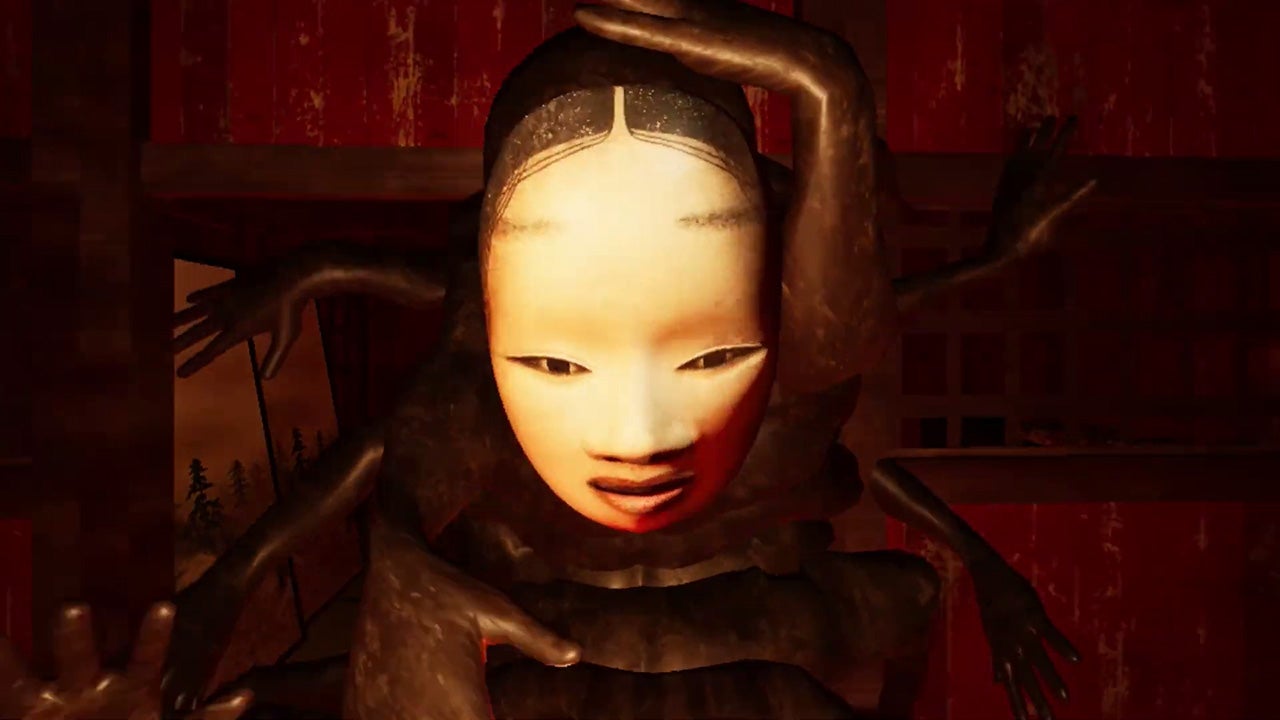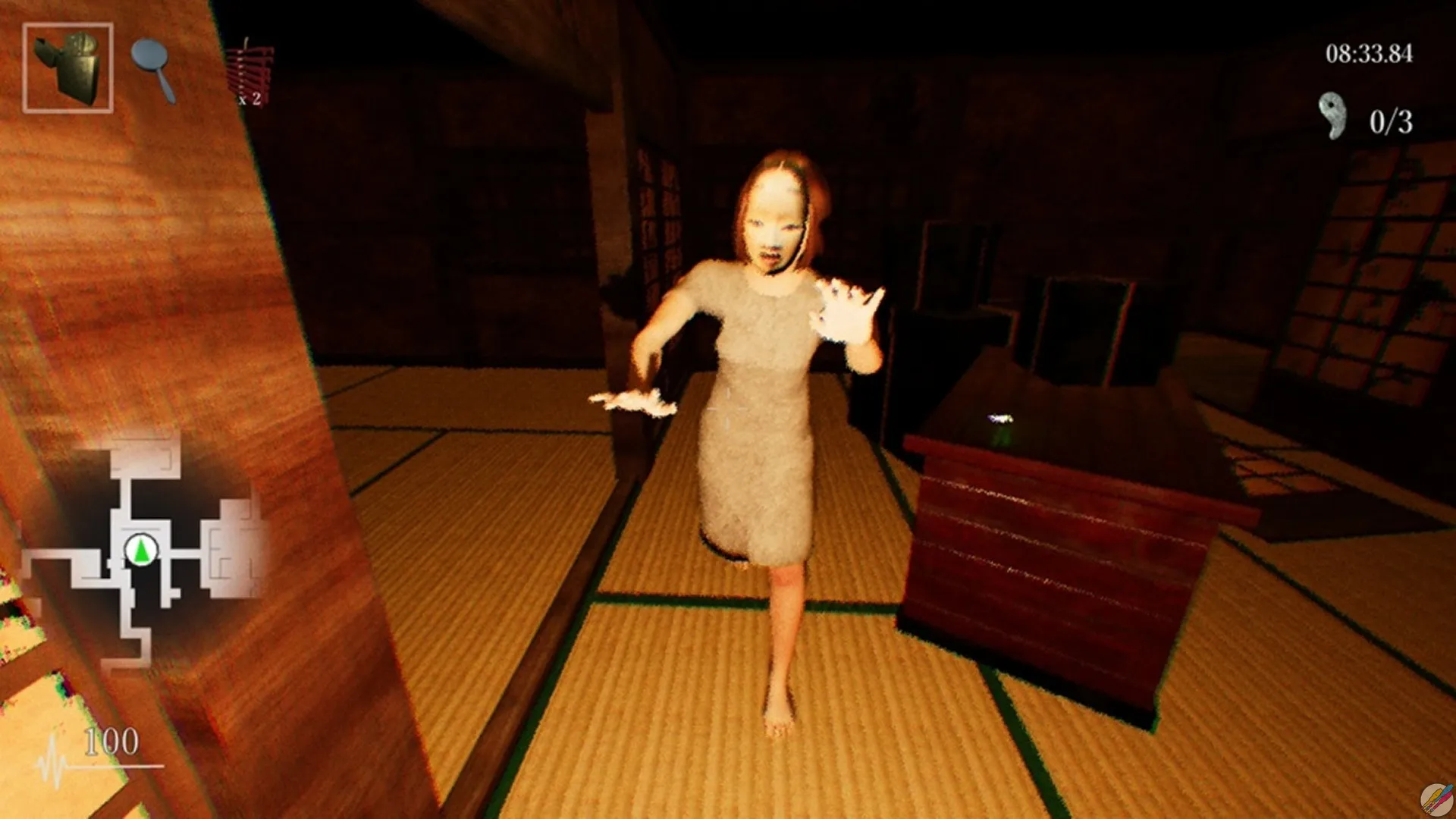Put your seatbelts on and turn out the lights because we are back with another game for you horror fans. This is going to be a ride you will not soon forget.
Amnesia: The Dark Descent, the game that started the horror game renaissance, was released 11 years ago, and a number of games were undoubtedly influenced by its success. This also applies to the game we will be covering today, Shadow Corridor, a horror game with a Japanese aesthetic that was made by Kazuki Shiroma alone.
With animals to avoid and shady pathways to navigate in order to escape, this game largely follows the Amnesia formula. The creatures are numerous, and Shadow Corridor forewarns you that they will react to your actions right away. Some monsters are sensitive to light, and they may seek out sources of light.
The sound of your footsteps will entice others to come up to you. There will be certain critters who seem to love getting in your path. The idea is the same regardless of the threat: if you are not cautious, they will pursue you. Though it may not be nearly as horrific as Amnesia, this game meets all the requirements for a scary experience: it is dark, a little disorienting, and the monsters will charge out of the shadows at you.
Let us now discuss the nuances of this game.
A JAPANESE MIDSUMMER NIGHTMARE TALE

Shadow Corridor is built up in a traditional way. The player is exploring an alley when they come upon a mirror that takes them to another realm. As they face the apparitions that stand in their path, their bravery begins to wane. Their only chance of surviving is to follow K’s instructions from the notes he left behind. These notes are strewn everywhere and provide gameplay tips, so you won’t have to search far to put what you’ve learned into practice.
Otherwise, they have no bearing on the plot, which is told through spoken cutscenes.There are a total of ten chapters in the game: seven main chapters, two secret chapters, and one side narrative. I don’t want to give out spoilers so I’ll just say you begin the game as a typical individual strolling happily through Japan’s numerous historic alleyways. This is true until you enter a tunnel that transfers you to a nightmare in true Spirited Away fashion.
Inside this nightmare, you must contend with apparitions, Noh Masks, demons, and animals, acquire stuff to live and unravel the mystery that surrounds this eerie environment. Shadow Corridor’s primary plot may be finished in a short amount of time. If you take your time and enjoy the game, you should be able to complete it in a couple of hours at most. Once you’ve finished the main game, you’ll be able to play a new mode called Apparition Defenders. You go through the adventure again in this mode, except you, on the other hand, are the bad spirits this time.
The plot is no masterpiece I’ll be honest with you guys, however, the one factor that will make you revisit this game, again and again, is its atmosphere. Shadow Corridor’s winning element is its atmosphere, which is achieved by making effective use of the few resources available and relying on the universal charm of Japanese horror, which is linked to the folklore and traditions of the Rising Sun, and which distinguishes it from many other similar titles in terms of structure, making it somewhat unique.
The great audio mix is particularly notable, with the music arriving in the most ecstatic moments to emphasize the sense of misery and terrible noises linked with each individual monster. The title is a good summary of what we’re dealing with. The main elements of the gaming experience are corridors and shadows. This game can be classified as a first-person adventure with survival horror elements, developing mostly as a walking simulator where we are continually pursued by unbeatable dangers, from whom we can only hide and flee, maybe by inventing stealth methods and locating hiding locations.
This game is ideal for Halloween and other late-night activities with friends or alone. The controls are slick and simple to learn, the jump scares are excellent, and the soundtrack improves the entire experience. Yes, the level design might seem a bit repetitive but that doesn’t take too much away from the overall experience of playing this game. The game also concentrates on the difficulties.
Challenger, the hardest setting, feels like you’ve been blasted into a special mode where all you have to do is survive. While five different opponents kinds pursue you, a single touch from one of them restarts the game. The rules are straightforward. It gets clearer when you achieve the objectives and go outdoors after investigating the randomly arranged map and gathering 5 goblet objects, 3 on basic difficulty. However, there are adversaries that cannot be beaten all across the field, and the ‘roamer,’ as the name implies, roams the map in pursuit of the protagonist.
With few exceptions, if an adversary catches you, you will die in one shot, and if you attempt again, you will be returned to the map’s starting location. Instead, the wanderer that arrives has a predetermined pattern for roaming and tracking, and supplies players with numerous goods and map gimmicks to avoid tracking the wanderer, making the difficulty feel reasonable.
The game’s portrayal of fear is incredibly effective. As you traverse the dark hallways armed only with a lighter and various non-lethal items, there is no actual soundtrack to speak of. The whole acoustic design is deafeningly quiet, with just the sound of your own footsteps audible. That is until an evil ghost discovers you. Then it’s a question of life and death as the scenario is overwhelmed by strong music, forcing you to flee and hide from whatever is hunting you. Jump scares are present but they are well-executed and the game never seems overly reliant on them.
They begin innocently enough until they become quite terrifying! Each map is produced at random, keeping you on your toes if you choose to revisit any of the game’s sections. As you seek for keys to open doors in an attempt to escape, you’ll never come across the same pattern of hallway mazes twice. The fact that each level has a timer is also fantastic, making it a terrific method for speedrunners to enjoy.
The tension is unbearable and stifling, and no agoraphobic individual should enter Shadow Corridor. The game includes game-changing stages centered on the notion of escape in store for those who can take the strain. In certain situations, waiting even an endless amount of time to deal with the obstacles is impossible; you must sprint and study the area rapidly, locating interactive features and pathways that do not lead to traps.
In these cases, the game gives a bit in terms of presentation, demonstrating the technical side of the scenario. If dark atmospheres and blackness help to keep the experience interesting in most situations, the focus on the creatures we’re after exposes the limits of production in terms of modeling and animation a bit, not to mention the ferocious and at times unjustifiable hearing aggression of the apparitions’ screams – repeated at high volume in a loop of grace equal to that of someone honking in traffic.
Shadow Corridor presents a saga utilizing extremely basic cutscenes in which the few characters create the groundwork for a plot structured on drama, misunderstanding, forgiveness, and familial ties, immersing the protagonist sufficiently to make him feel like an active participant.
There is a slight disconnect between the events narrated and the game’s dynamics – especially because the story was written after the first free release – but the game corrects this by introducing a true ending that reimburses the most skilled with more details on the story, thanks to a new one individual who significantly alters the final incidents, turning and widening what is the greatest challenge, even in terms of gameplay.
Marvelous Gamers Verdict

Shadow Corridor is a low-budget, indie digital haunted house game developed by a single person that provides precisely what it claims and is suitable for a frightful night as a novelty experience. Its thrills may not be enough to keep the experience going past the first few levels, but the early portions of the game may be worth the modest admission fee on its own.
One of the most common problems in horror games is the loss of suspense over time, which was cleverly addressed by using random placement maps. The graphics blend very perfectly with the game’s ambiance, leaving little room for disappointment, and the music and sound are excellent.
It is perhaps one of the most distressing video game experiences seen recently; it stands out among a sea of identical games because of its unique Japanese setting, which pervades not only the situations but the whole gaming experience. The link to Japanese legend lends the film a distinct flavour that is hard to come across elsewhere, and it stages a strange terror. Those hoping for a more organised game, on the other hand, may find the continual traveling between random pathways limiting and tiresome.
One thing for sure, you won’t be able to avoid getting shivers as you travel along each of the dimly illuminated corridors. Even the wide outdoor spaces have an unsettlingly cramped feel to them. Although I believe the game is best played on a PC, if you’re on the road or a glutton for pain and want to play in the warmth and safety of your own bed, Shadow Corridor on Switch with lights off and your headphones on will provide you with the fantastic horror experience as well. Just don’t hold it against us if you have nightmares.
Talks of Shadow Corridor 2 is also doing the rounds, as announced by the developer Kazuki Shiroma and should be completed by the end of the year. While the announcement of Shadow Corridor 2 doesn’t reveal many details about the game’s content, we are sure it will inherit the main traits of the original. While the announcement of the game does not provide many specifics about the game’s content, we are certain that it will retain the game’s major characteristics.
Aside from a new plot, adversaries, and equipment, the game will also feature a new gameplay system known as Karuta which is a type of Japanese playing card. This new method is intended to allow players to discover their own personal playstyle. Rather than just being a scary experience, Kazuki Shiroma wants to create a game that demonstrates the enjoyment of judging circumstances while also providing character advancement and challenge. Now isn’t that nice?
So that’s it for this one, if you liked the video give it a like and do check out our other videos. If you are new to our channel, then please subscribe to it and don’t forget to press the bell icon! See you in the next one.
